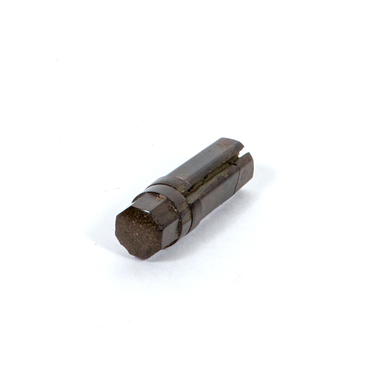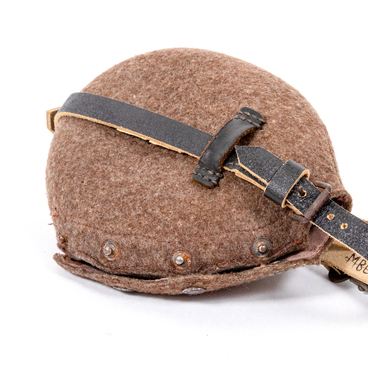According to experts, the German mouth organ from the Museum Resource Center collection was made between 1937 and 1939 at the Hohner factory, a famous musical instrument manufacturing company in Germany.
German watchmaker Matthias Hohner founded the company in 1857 with money he inherited from his father. Since the competition among watchmaking companies was too high, Hohner decided to start a more lucrative business.
Originally, the Hohner company specialized in mouth-organs, which were created manually up until 1860. One master could only make one instrument per day. However, as the company expanded, Hohner managed establish mass production of mouth organs. The parts were produced on steam powered milling machines, and hired workers assembled the instruments.
In 1862, Hohner sold the first batch of mouth organs to the United States, where the Civil War was already gaining momentum. He gave some mouth organs to the soldiers' families for free.
Mouth organs were popular among the Wehrmacht’s soldiers during the Second World War since it was a light, compact instrument and it was easy to play simple melodies on it. Military command encouraged this hobby in every way. Therefore, the company ‘Hohner’ began to produce mouth organs for the German military department.
Many German soldiers kept a mouth organ in the top left pocket out of their military jackets. It was believed that if a bullet hit the pocket, the instrument would take the brunt. The German mouth organ was a favorite trophy among the Red Army soldiers.
The M. Hohner Vineta No.4 Harmonica from the museum collection belonged to a German soldier. It has a dark brown wooden case, onto which metal plates with 48 reeds are fixed. The elongated reed cells and square play holes are arranged in two rows. A group of four holes makes up one chord.
Musician tightly wrapped his lips around the mouth organ and closed or opened the necessary holes with his tongue to produce the needed sounds. The top row of holes produced sounds on exhaling, the bottom row — on inhaling. While playing the mouth organ, musician moved the instrument itself, whereas his head had to be still, which required a certain skill.
German watchmaker Matthias Hohner founded the company in 1857 with money he inherited from his father. Since the competition among watchmaking companies was too high, Hohner decided to start a more lucrative business.
Originally, the Hohner company specialized in mouth-organs, which were created manually up until 1860. One master could only make one instrument per day. However, as the company expanded, Hohner managed establish mass production of mouth organs. The parts were produced on steam powered milling machines, and hired workers assembled the instruments.
In 1862, Hohner sold the first batch of mouth organs to the United States, where the Civil War was already gaining momentum. He gave some mouth organs to the soldiers' families for free.
Mouth organs were popular among the Wehrmacht’s soldiers during the Second World War since it was a light, compact instrument and it was easy to play simple melodies on it. Military command encouraged this hobby in every way. Therefore, the company ‘Hohner’ began to produce mouth organs for the German military department.
Many German soldiers kept a mouth organ in the top left pocket out of their military jackets. It was believed that if a bullet hit the pocket, the instrument would take the brunt. The German mouth organ was a favorite trophy among the Red Army soldiers.
The M. Hohner Vineta No.4 Harmonica from the museum collection belonged to a German soldier. It has a dark brown wooden case, onto which metal plates with 48 reeds are fixed. The elongated reed cells and square play holes are arranged in two rows. A group of four holes makes up one chord.
Musician tightly wrapped his lips around the mouth organ and closed or opened the necessary holes with his tongue to produce the needed sounds. The top row of holes produced sounds on exhaling, the bottom row — on inhaling. While playing the mouth organ, musician moved the instrument itself, whereas his head had to be still, which required a certain skill.



